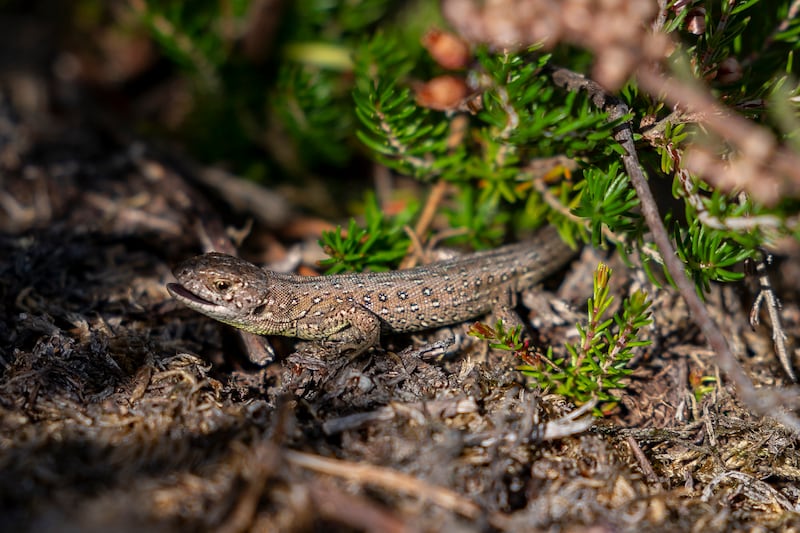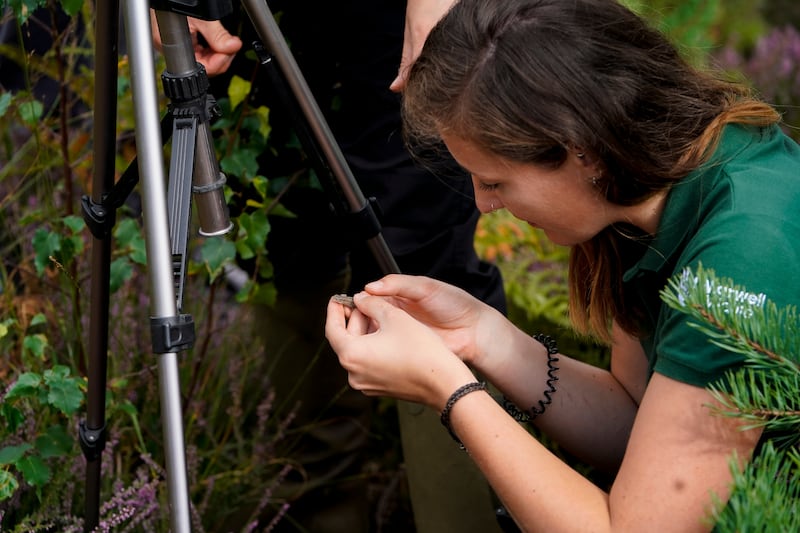A conservation group has released 80 juvenile sand lizards, one of the UK’s rarest reptiles, into the wild in Hampshire.
Marwell Wildlife, led by PhD student Rachel Gardner, released the lizards onto Eelmoor Marsh Site of Special Scientific Interest near Farnborough as part of a three-year release plan and research project.
Radio tags weighing less than 0.3 grams were used to assess the animals’ activity, and the lizards were tracked upon their release into the wild.
The research included evaluating behaviour, habitat use and survivorship of individuals, which are uniquely identifiable by their spot patterns.

Ms Gardner said: “We have seen some unexpected behaviours, for example, some individuals travelled over a hundred metres away from the release site within just a couple of weeks.
“Considering the size of the animals [a few centimetres long] and the complexity of the heathland environment, this is quite a distance in such a short space of time.”

Once common across heathlands of southern England, sand lizard numbers have depleted due to habitat loss, and they are now only found in a handful of sites in southern England, Wales and Merseyside.
Marwell Wildlife, as part of its conservation programme, has now brought the total number of sand lizards reintroduced to Eelmoor Marsh to over 240 individuals, with the aim to establish a self-sustaining population.
Ms Gardner said: “It’s been a privilege to work on this project and observe the sand lizards in such detail.
“We hope the research will help inform and make recommendations for the reintroduction protocol in the future, and therefore help optimise its conservation success.”








